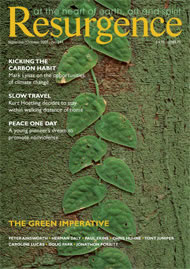Carl Safina’S conversational style, mixing scientific accounts with almost real-time reporting of his meetings with researchers and conservationists, makes for an easy and engaging read. Safina is passionate about turtles, and his enthusiastic stories are sure to change the way you think about these beautiful sea-creatures.
However, I do have two negative comments about the book. First, it is not consistent in giving metric measurements. Secondly, I lost attention in a few places: the long detailed accounts of swordfish hunting, for example, and the section on fighting legal battles for conservation. The rest of the time, I was carried along by his poetic and evocative stories of the lives of turtles and the work being done to save them. I was astounded by the turtles’ beauty and their adaptations to life’s challenges and ecological importance; I was also shocked by the relentless human activity that is destroying these creatures forever.
There are seven species of turtle and the biggest is the Leatherback, 350kg (800lb) on average and over 2.7m (8ft) from flipper to flipper.
Turtles have been on Earth for 220
million years, and modern-looking ones for 125 million years. They were travelling the ocean before the oceans we know today were formed; before India bumped into Asia to create the Himalayas, and before Eurasia, Greenland and North America had even separated. The process of natural selection has had aeons to refine the turtle’s superb adaptation to a pelagic life. Turtles are warm-blooded reptiles that can dive deeper than whales (over a kilometre) for about an hour. They can do this because they are superbly adapted to diving, capable of keeping their brain alive on a long dive when ours would die in minutes. They do this by exchanging 80% of the air in their lungs in just seconds. Because of this, even at great depths they don’t get cramps or the bends.
Turtles regularly travel thousands of miles across the oceans. A turtle can lay eggs on a sandy beach in Trinidad, feed up on jellyfish or sea-grass and follow the Gulf Stream clockwise around the North Atlantic until it reaches Britain, travel down to the Canary Islands and then swim back across the tropics to lay another batch of eggs in Trinidad.
After 200 millennia and in the last decades, we humans have pushed turtles towards extinction. We have, among other things, created global warming that affects their sex ratio, have dragged 1.4 billion baited fish hooks through the oceans every year, and have pulled enormous mile-long nets through the sea, the turtles’ home. Turtles are not adapted to ignoring plastic bags that look like jellyfish; nor can they tell hotel light pollution from the starry night when orientating themselves at their most vulnerable time, egg-laying.
Safina responds to their plight by telling us conservation success stories, most notably the Caribbean experience of engaging local people in developing ecotourism. I don’t share his optimism, and I wanted an exploration of the connections between the turtles’ fate and the wider processes that link their over-exploitation with our greed and overpopulation. What it is that keeps us ignorant of what is being lost under the ocean waves, out of sight?
In such a readable way, this book informs us, celebrates these incredible life forms and shows – with heroic examples – how we could save the turtle from extinction if we chose to.







